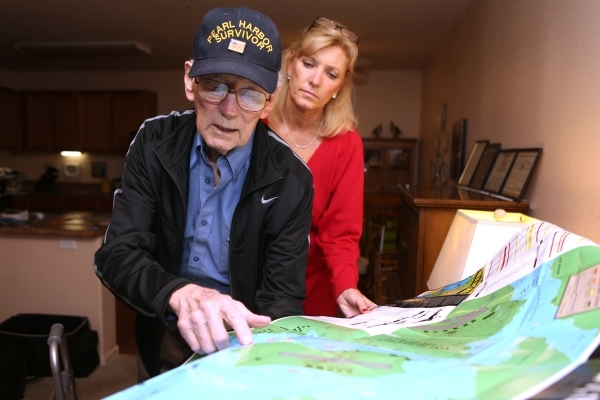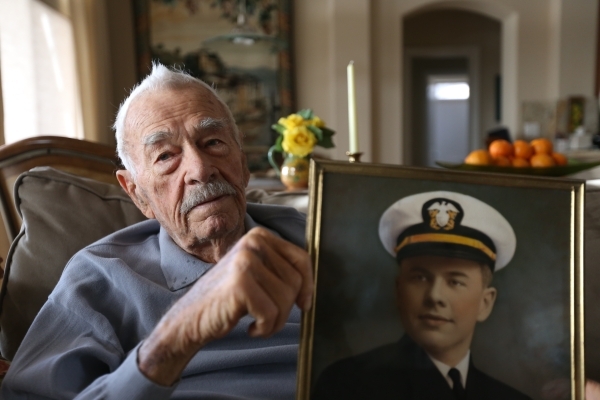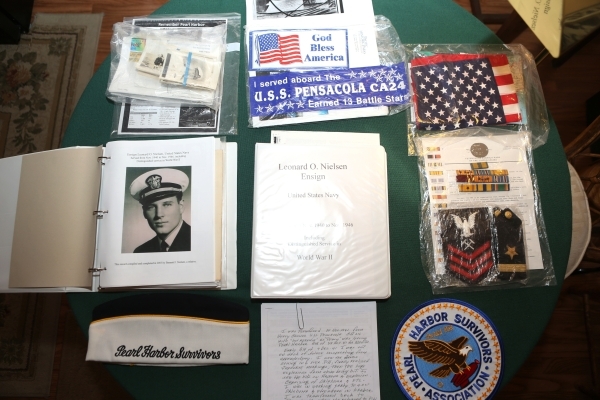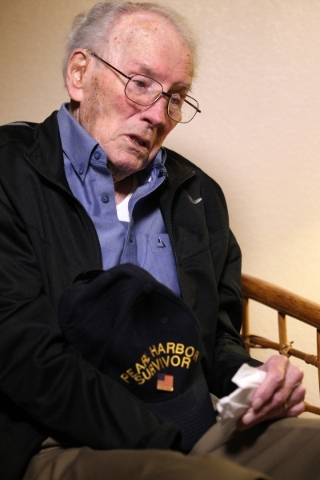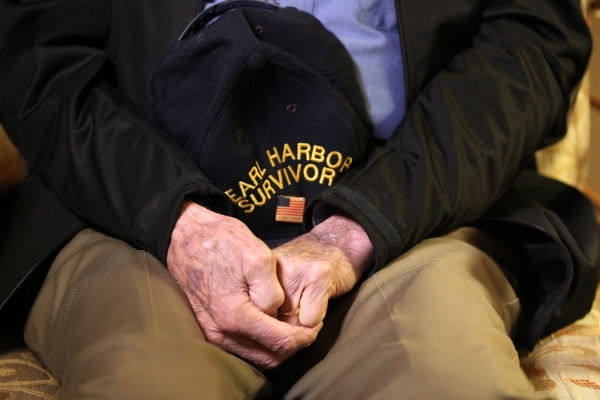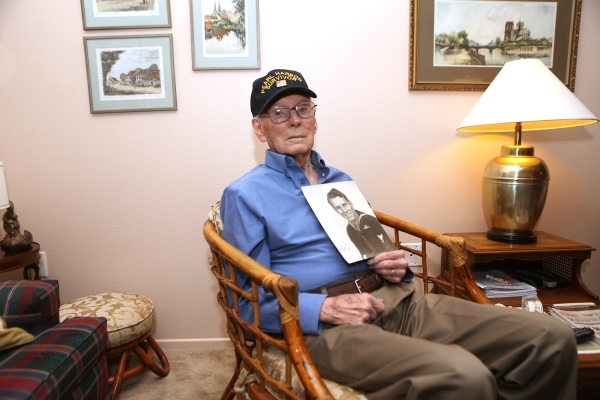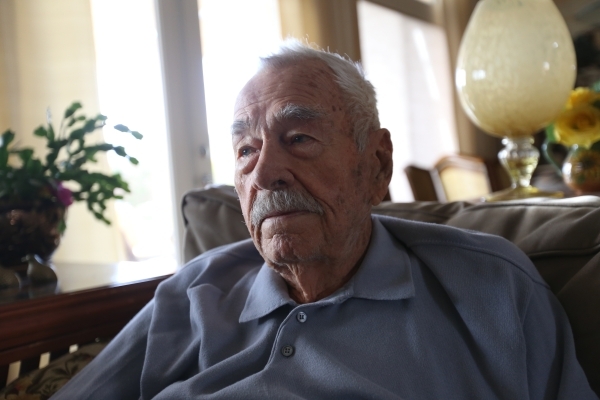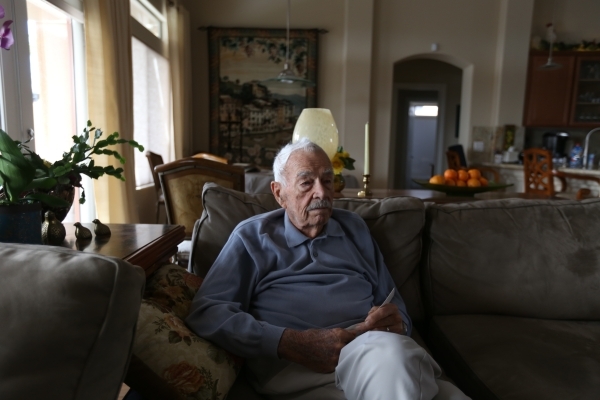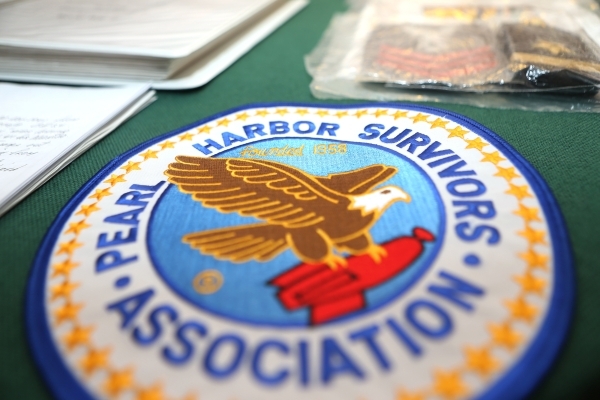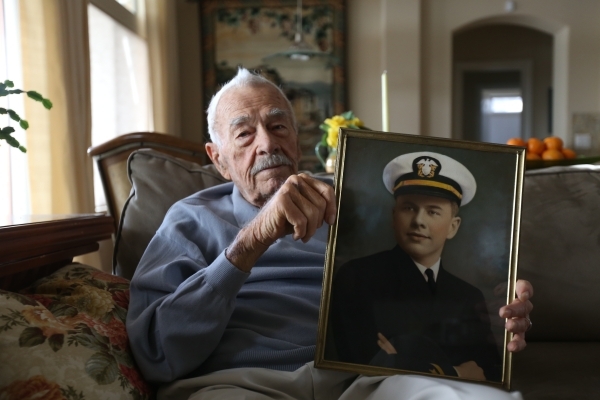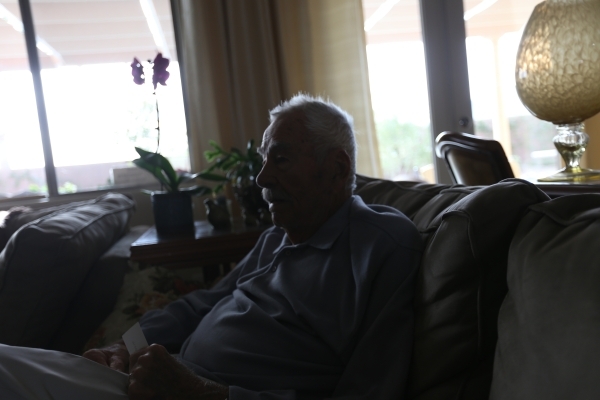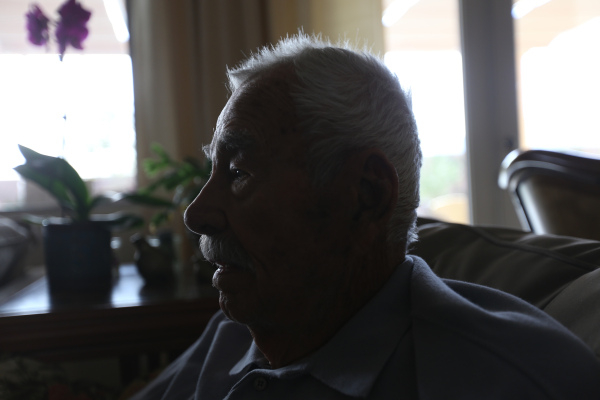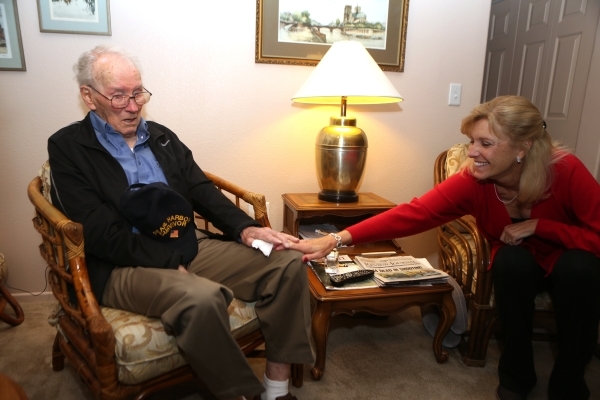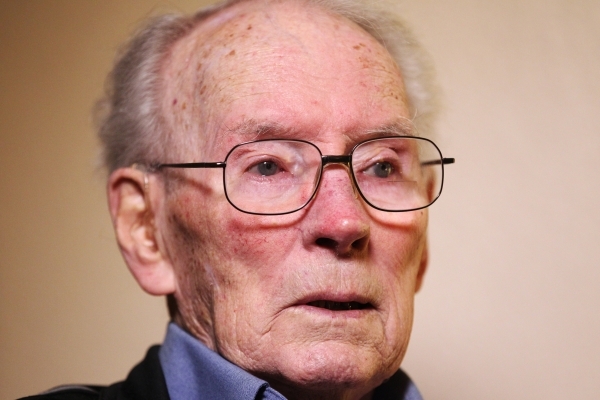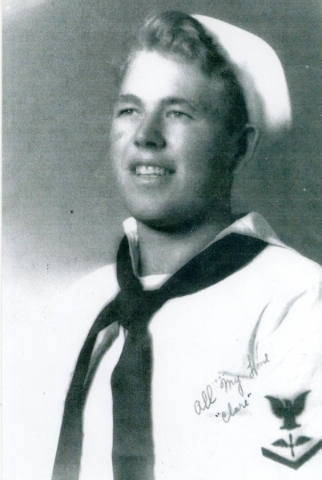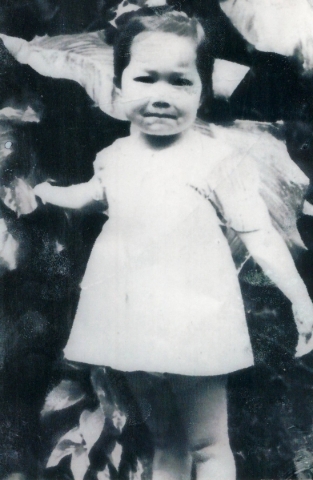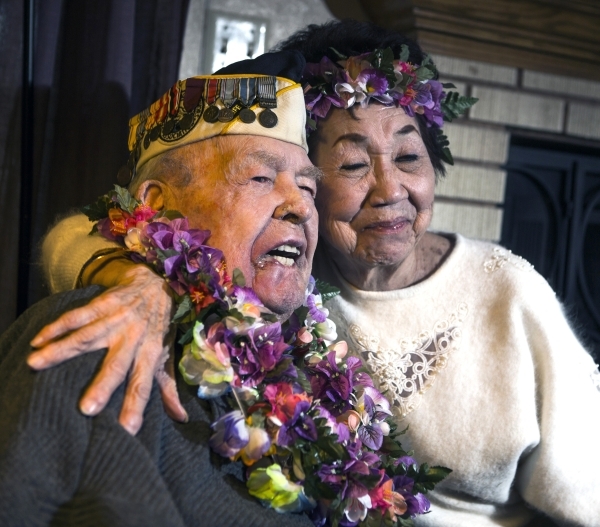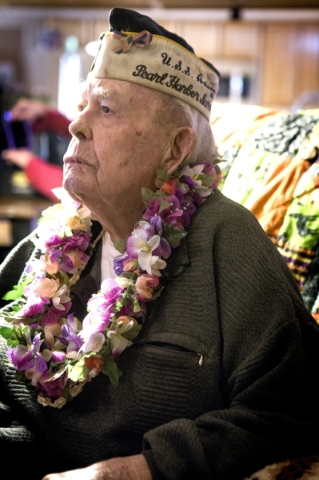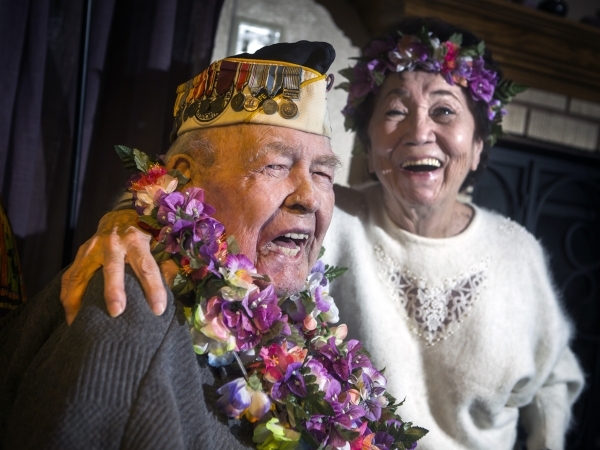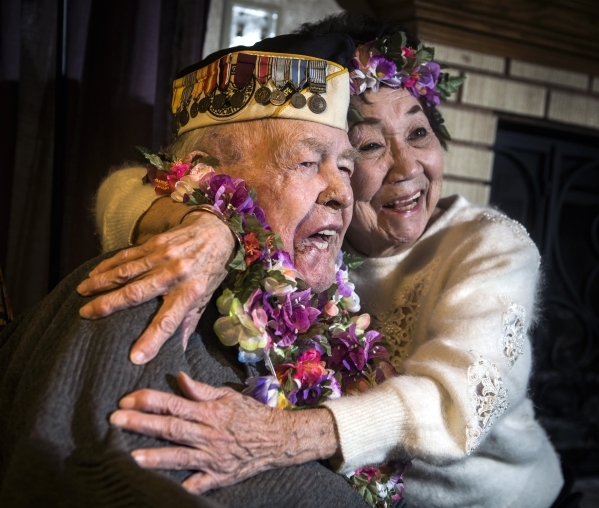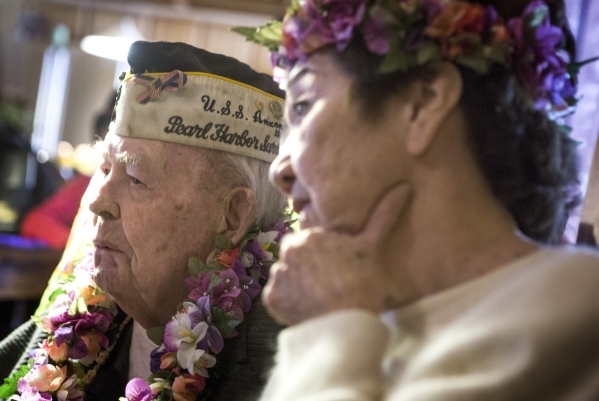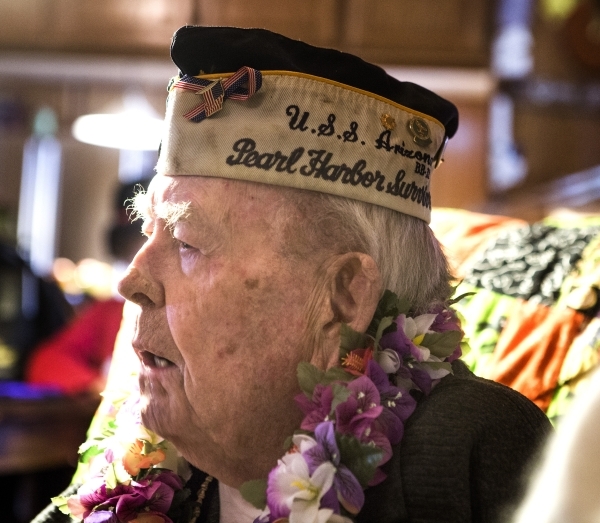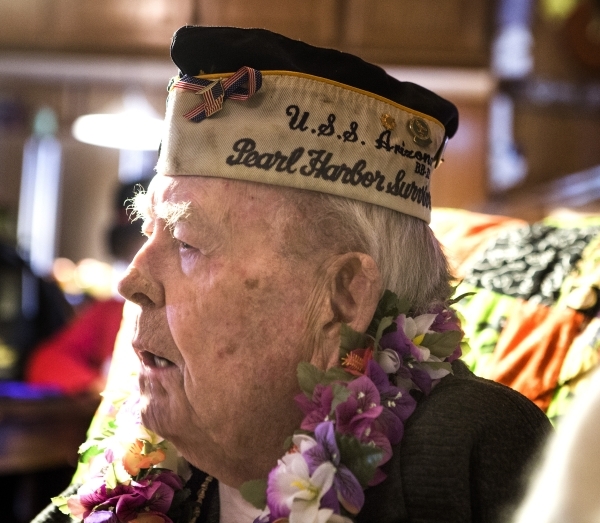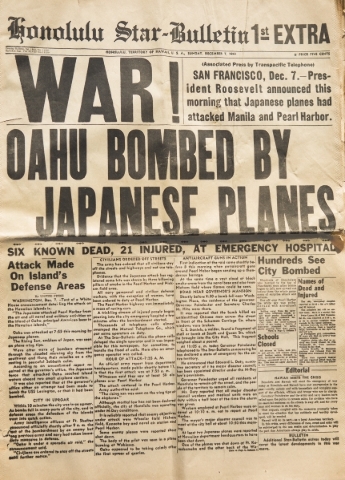Las Vegas Navy veterans recall horrific day in 1941
Lenoard Nielsen said that "we did our best" to rescue those who "were burned terribly bad."
Ed Reed said he felt "helpless" because his men had less than 20 rounds of anti-aircraft ammunition ready to fire.
Visions of the horrific morning 74 years ago when swarms of Japanese warplanes descended on the Hawaiian island of Oahu on Dec. 7, 1941, still flash in the minds of these two Las Vegas Navy veterans who survived the Pearl Harbor attack.
The raid by 350 "Zero" fighters, "Kate" torpedo planes and "Val" dive bombers launched from Japanese navy carriers also involved 30 submarines, five of which carried midget subs to infiltrate the harbor and the coast of Oahu.
After the initial airstrike, Nielsen, now 93, said he thought "this has got to stop. But it didn't. They kept coming and coming and coming."
At the time, he was a 19-year-old apprentice seaman from Salina, Utah. He had joined the Navy in 1940 to become a shipfitter — a sailor who repairs ships — and was assigned to the USS Arizona out of boot camp. After the Arizona arrived in Pearl Harbor, he was granted a transfer to serve with a childhood friend aboard USS Pensacola, a heavy cruiser.
The Pensacola departed Nov. 29, 1941, to transport Marines to Midway Island, but Nielsen came down with appendicitis and was too sick to make the trip.
He was taken to the USS Solace hospital ship, where doctors removed his appendix the next day. Still recovering a week later, he watched the attack unfold from the Solace, which was anchored in sight of the Arizona.
"I was out on the deck. I like to watch a new day dawning," he said Thursday at his Las Vegas apartment.
Little did he know that he was watching the dawn of a day President Franklin D. Roosevelt would later declare a "date which will live in infamy."
"I didn't realize what was happening until I saw marks on the planes and they started to bomb and drop torpedoes," Nielsen said.
Sneak attack
Kansas City, Mo.-born Ed Reed was a 21-year-old "gold bar" ensign on the destroyer-tender USS Whitney, anchored not far from the Arizona. An aspiring semi-pro baseball player, he had joined the Naval Reserve so he could play catcher on a local team. He wound up being a "90-day wonder" officer in command of sailors who "were old enough to be my father."
When the loudspeaker crackled to life that Sunday morning with a "call to general quarters," Reed thought it was a drill.
"That's your fighting attitude," the 95-year-old said sitting on his living room sofa. "When the thing started, we were at peace. Nobody had war on their mind."
Then he saw an airplane come by at a low altitude. "It had a red ball on it," he said, describing the plane's Rising Sun emblem.
His men quickly gathered at the Whitney's bow to man and load the their 3-inch, .50-caliber anti-aircraft guns.
"That was the beginning of the war, and we only had 16 rounds of ammunition. It didn't take long to fire 16 rounds, and then we were done," he said.
Reed watched as a Japanese plane came in over the Arizona. "Shortly after that, it punched a hole in the main deck between the stacks at midship," he said.
Then, "I could hear the sizzle. The powder in the magazine was burning. I could hear it from our ship," Reed said. "It finally did go 'boom!' I could see the stacks move.
"The poor devils didn't have a chance."
Never forget
Images of the Japanese warplanes making turns close to the Solace still play in Nielsen's mind. "I can still see some of those aircraft and some of those pilots, and I don't like to do that," he said with a sob, fighting back tears.
He remembers seeing one plane unleash a bomb and then: "I watched my old ship, the Arizona, explode. And I watched the Oklahoma turn over, and then they asked for volunteers," he said.
With black smoke billowing from the Arizona as it sank, he and others from the Solace hopped in longboats and gigs and rushed to rescue sailors from the battleship and the fiery oil slick around it.
"The majority of the people we helped were burned terribly bad," he said. "The whole area was aflame from the oil from the Arizona and some of the other battleships.
"Sometimes I wonder why the good man upstairs let me get through what we did," Nielsen said, pausing as he spoke. "We rescued a lot of people, some alive. Some were burned so bad. I don't know how many we rescued, but we helped. We did our best."
In all, 2,403 men and women died in the attack. Almost half — 1,177 — were on the Arizona.
Nielsen said it took a lot of years for him to cope with the Pearl Harbor experience and try to sort reason from anger.
"I had hatred, a get-even attitude," he said. "Eventually I learned that this world was made up of peculiar situations."
Like the quick end to World War II that followed the United States' atomic bombings of Hiroshima and Nagasaki, he said.
"I thought we had won by settling the aggressiveness of Japan and Germany. And we had created a world of peace and love," Nielsen said. "But it hasn't turned out that way."
Contact Keith Rogers at krogers@reviewjournal.com or 702-383-0308. Find him on Twitter: @KeithRogers2



